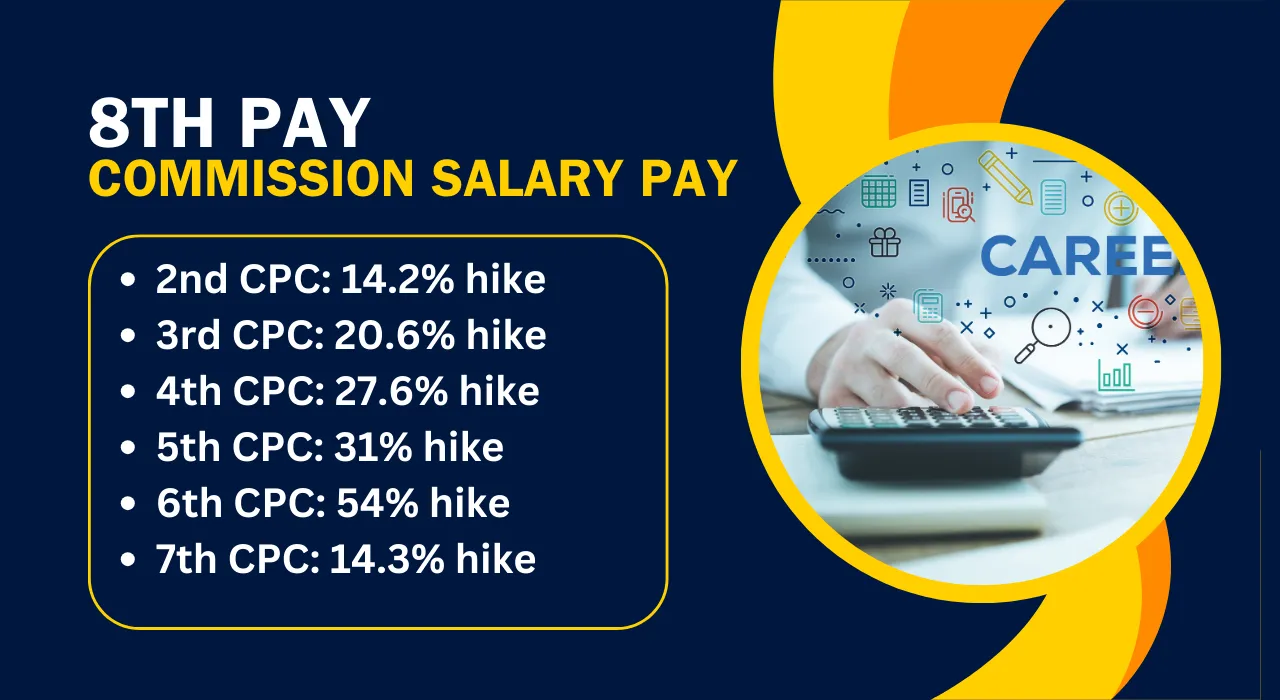8th Pay Commission Salary Pay Matrix: What to Expect The announcement of the 8th Central Pay Commission (CPC) has sparked excitement among government employees and pensioners. This upcoming reform, expected to be implemented by January 1, 2026, promises to introduce significant changes to salary structures and pensions, ensuring better financial security for millions of individ…
8th Pay Commission Salary Pay Matrix: What to Expect The announcement of the 8th Central Pay Commission (CPC) has sparked excitement among government employees and pensioners. This upcoming reform, expected to be implemented by January 1, 2026, promises to introduce significant changes to salary structures and pensions, ensuring better financial security for millions of individuals.
Table of Contents
What is the Pay Matrix?

The concept of the pay matrix was introduced to simplify salary structures and bring uniformity across various government departments. Essentially, it is a two-dimensional chart or table that determines the salary levels, grade pay, and yearly increments for employees based on their roles and designations.
- Horizontal Range: Represents levels in the hierarchy, numbered from 1 to 18, with each level corresponding to a specific designation.
- Vertical Range: Indicates annual pay progression, with a consistent increase of 3% within each level.
This matrix ensures a transparent and systematic approach to salary hikes, replacing the older methods of pay scales and pay bands.
Evolution of the Pay Commission Recommendations
The pay matrix concept evolved through successive CPCs to make salary structures more efficient:
- Before the 6th CPC: Salaries were determined by pay scales.
- 6th CPC: Introduced pay bands with grade pay as the status determiner.
- 7th CPC: Replaced pay bands with the pay matrix, where levels became the new standard for determining an employee’s status.
The 8th CPC is expected to continue refining this system, ensuring it meets the needs of modern government employees.
8th Pay Commission: Date of Implementation and Formation
Union Minister Ashwini Vaishnaw recently confirmed that the 8th CPC will be constituted by 2025, aligning with the conclusion of the 7th CPC’s term in 2026. This timeline ensures that recommendations are thoroughly reviewed and implemented without delay.
If historical patterns are followed, the 8th CPC will likely be effective starting January 1, 2026, mirroring the timeline of the 7th CPC, which was constituted in 2014 and implemented in 2016.
Salary Hikes in Previous Pay Commissions
Over the years, each CPC has brought about substantial increases in salaries and pensions for government employees. A quick look at previous CPC salary hikes reveals the following trends:
- 2nd CPC: 14.2% hike
- 3rd CPC: 20.6% hike
- 4th CPC: 27.6% hike
- 5th CPC: 31% hike
- 6th CPC: 54% hike
- 7th CPC: 14.3% hike
The 8th CPC is expected to continue this tradition, with anticipated hikes in the range of 25-30%.
Anticipated Salary Increase Under the 8th CPC
According to TeamLease Digital CEO Neeti Sharma, the implementation of the 8th CPC could result in a significant salary boost, thanks to a proposed fitment factor of 2.6 to 2.85. This adjustment could lead to:
- Salary Hike: 25-30% increase in salaries.
- Minimum Basic Pay: Expected to rise beyond ₹40,000.
- Additional Benefits: Enhanced perks, allowances, and performance-based pay.
This hike is poised to provide much-needed financial relief and motivation to government employees while boosting their purchasing power.
The Significance of the Aykroyd Formula
The minimum pay in the pay matrix is determined using the 15th Indian Labour Conference (ILC) norms and the Aykroyd formula. These calculations ensure that salaries are aligned with inflation, living costs, and essential household needs.
What to Expect in the 8th CPC Salary Pay Matrix
The upcoming 8th CPC is likely to retain the foundational principles of the pay matrix while introducing adjustments to address contemporary economic challenges. Employees can look forward to:
- A more streamlined salary structure.
- Greater transparency in yearly increments.
- Higher allowances and perks to match modern-day demands.
Conclusion
The 8th Pay Commission marks a significant milestone in the evolution of salary structures for central government employees. With the promise of substantial salary hikes, streamlined pay levels, and enhanced benefits, this reform is set to have a positive impact on the financial well-being of employees and pensioners alike. As the government gears up to implement these changes, millions of households are eagerly awaiting the detailed recommendations and benefits that will come with the 8th CPC.
